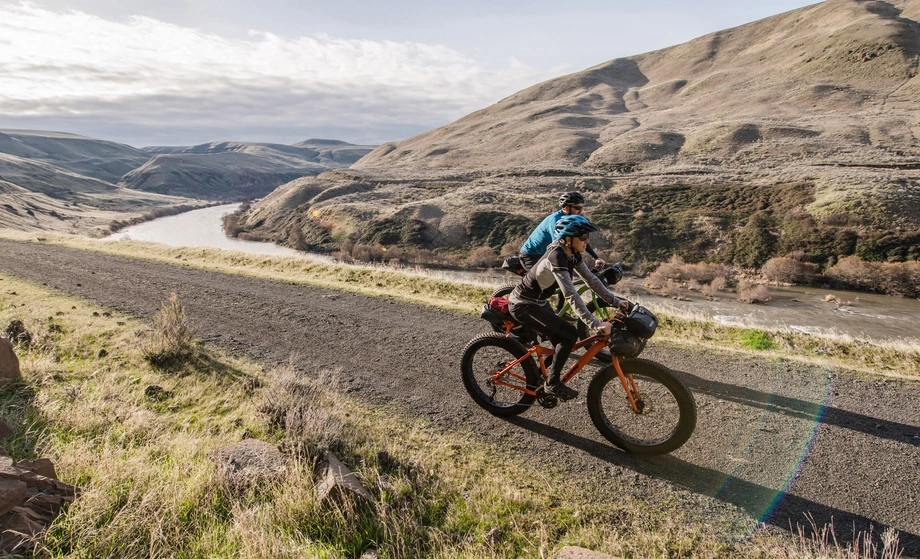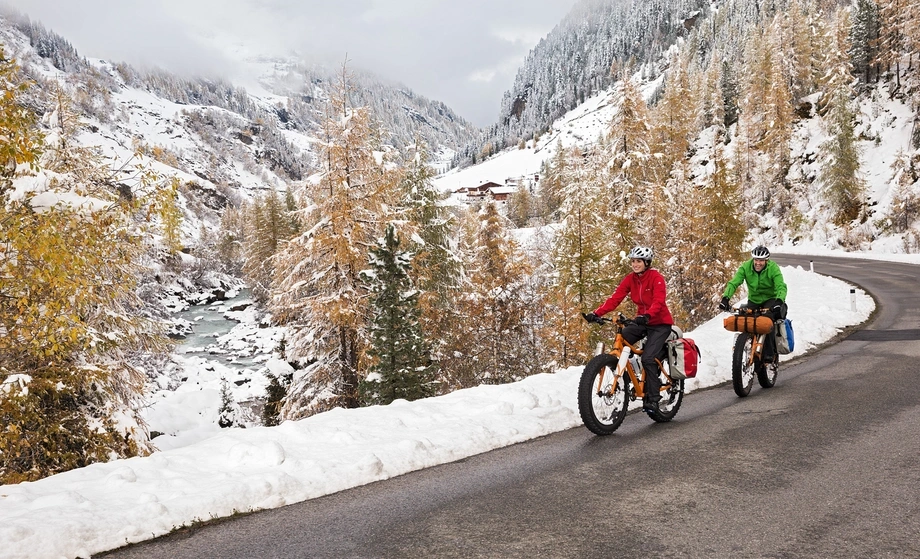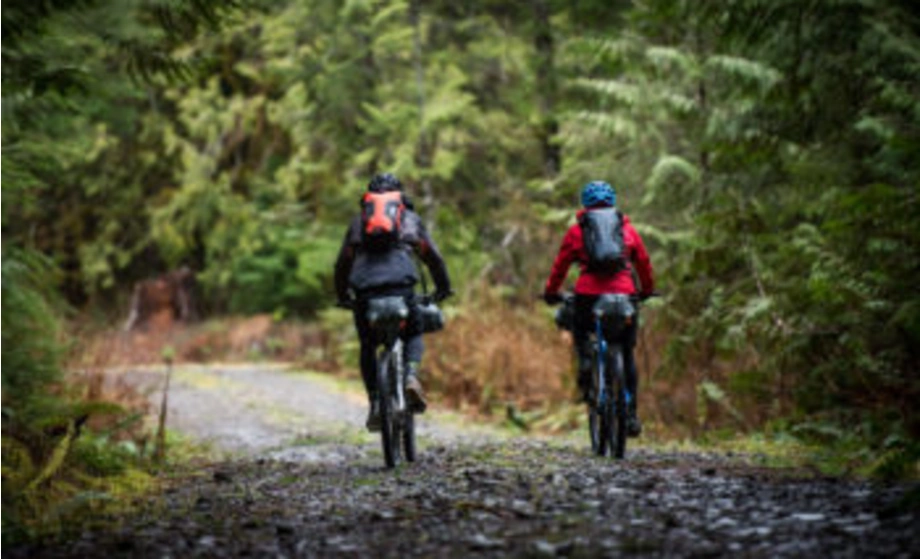Bikepacking is the latest trend among cyclists. It combines the thrill of biking with the adventure of wild camping. It’s more than just a new twist on bike travel; it’s a unique experience that offers freedom and exploration. Especially popular during the pandemic, bikepacking allowed us to discover new trails and hidden spots close to home.
Bikepacking vs. Traditional Bike Touring
Unlike traditional bike touring, bikepacking is all about agility and adventure. While bike touring often involves road travel and panniers, bikepacking focuses on off-road trails and securing gear directly to the bike to maintain maneuverability and speed.

The difference between bikepacking and classic cycling tour is not only in the choice of route, but also the aspect of self-sufficiency.
Essential Bikepacking Gear
Choosing the Right Bike
- Full-Suspension Bikes: Offer comfort but can be challenging to pack due to their multiple moving parts.
- Hardtail Bikes: Versatile and sturdy, making them ideal for bikepacking.
- Fatbikes: Perfect for loose terrain and winter conditions but less efficient on paved roads.
- Gravel Bikes: Fast, light, and pre-equipped for bikepacking, ideal for multi-day trips on varied terrain.

Gravel bikes give you the freedom of covering diverse terrain.
Bikepacking Bags
- Handlebar Bag: Ideal for light, frequently accessed items like maps, rainwear, and provisions.
- Saddlebag: Holds medium-weight items such as clothing and sleeping gear.
- Frame Bag: Best for heavy objects, keeping the center of gravity low and stable.

Bikepacking in winter? A winter tour demands a lot from the cyclist.
Bikepacking Gear Checklist
Sleeping Essentials:
- Small tent or tarp
- Sleeping bag
- Camping mat
Clothing:
- Rainwear
- Insulation jacket or vest
- Bikepacking apparel and cycling underwear
Cooking and Food:
- Outdoor stove
- Provisions for several days
Navigation and Safety:
- GPS device or map
- First aid kit
Bike Essentials:
- Bicycle helmet
- Cycling Gloves
- Cycling shoes
- Multitool
- Lights
- Spare parts (inner tube, repair kit, pump, cable ties, etc.)
- Bike lock
Packing Your Bike
Handlebar Bag:
- Lightweight items: camping mat, first aid kit, rainwear, and provisions.
Saddlebag:
- Medium-weight items: clothing, sleeping bag, tarp, and gas cartridges.
Frame Bag:
- Heavy items: tent, food, stove, water, tools, and electronics.
Planning Your Bikepacking Route
For beginners, start with well-developed long-distance trails close to civilization. Gradually increase the length and remoteness of your trips. Plan your first tour during the warmer months to ease into the experience.
Before setting off, decide on a route and track it on a map or bike computer. Check your bike and gear, pack efficiently, and keep an eye on the weather. You’re ready to embark on your bikepacking adventure with everything in place!

Good planning is important for the success of the cycling route. Long-distance trails are a good choice for the first tours.